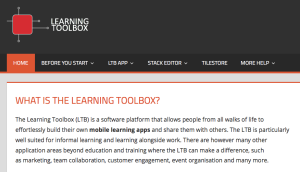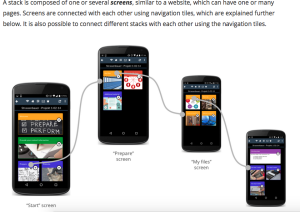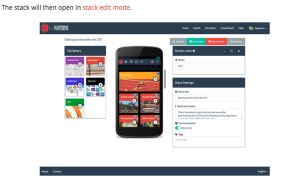Revisiting “Learning about politics” project – Part Three: Themes raised by the teachers
In my two latest blogs I started a series of posts to revisit the prior European project “Learning about politics” in which I worked as the ITB partner in 2010 and 2011. In the first post I discussed the project experience as a whole and presented some thoughts on the key activities in Germany and on the Politics Spring School 2011. In the second post I look at some ‘hot issues’ in the German (and international) politics in 2011 and what kind of developments we have seen since then. In this third post I will have a look at the the themes raised by German vocational school teachers with whom I worked in the project.
WikiLeaks, Netzpolitik and the NSA-affair
One of the vocational school teachers raised the issue ‘WikiLeaks’ as a new phenomenon in the international politices of those years. Although he couldn’t participate very intensively in the continuation of the project, he had drawn our attention to the new role of social media and new kinds of social networks in national and international politics. We firstly paid attention to the WikiLeaks network and its revelations. Then, we took note of the new role of social media and new kinds of protest movements in the revolutionary developments during the Arabic Spring. Finally, parallel to these developments, we took note of the new kinds of Netzpolitik networks that revealed plagiarism in the academic dissertations of some leading German polticians. At that time the abrupt fall of the popular conservative politician Guttenberg (then minister of defence) was the most striking case in which a politician had to resign because of plagiarism in dissertation.
Whilst these themes firstly seemed to refer to relatively separate phenomena, during the subsequent years they appeared to be more closer to each other and to concerns of ordinary citizens. Whilst the revelations on plagiarism had put the credibility of several politicians into question, a further episode around the WikiLeaks network had a major impact on the atmosphere of trust vs. mistrust on government policies. The whistleblower Edward Snowden (former agent of the NSA) had revealed to what extent NSA had got access to major servers and thus to private data. The most striking news was that of listening of the private phone of chancellor Angela Merkel by the NSA. All this raised the public interest in data privacy and concerns about data protection by national governments and major internet and telephone service providers.
Juniorvoting and participation of young people in elections
Another vocational school teacher was interested in the phenomenon ‘juniorvoting’ (Juniorenwahlen) – an initiative to organise simulated elections in schools among youngsters who didn’t have the right to vote. Such events had been organised successfully before national elections in Germany during the recent years. In 2011 there was an increased interest to organise such preliminary voting arrangements for youngsters also before the regional parliaments. However, before the elections of the regional parliament in Bremen there was less interest to organise such simulated voting, because the voting age had already been brought to 16 years. Thus, the youngsters had become real voters. Therefore, the schools were less willing to arrange juniorvoting events. Nevertheless, the teacher had collected lot of information on the implementation of such events and their role as preliminary elections and presented this as input to Politics Spring School. Also, we could use this material for the German platform of the Politics project. Sadly enough, the lowering of voting age appeared to have little impact on the participation of young voters in the regional elections in Bremen 2011 and 2015.
Climate change as challenge for policy makers and individual citizens
The third vocational school teacher had engaged himself intensively with the theme ‘climate change’ and managed to make use of this theme in his teaching. Therefore, we could use primarily his material as a basis for the respective ‘learning pathway’ of the German platform. This material had awareness-raising exercises (with YouTube videos), basic information on international policy processes to control/prevent climate change (Kyoto protocol and Copenhagen conference) and tasks that brought climate change close to the vocational area of his apprentices and to their individual behaviour as consumers. The grande finale was the competition for the apprentices to calculate the CO2 footprint of their designed holiday trips. Based on this material the teacher also prepared an input for the Politics Spring School and to work with several other participants on this theme.
Looking back, the theme ‘climate change’ gained weight in the German politics and at the international level. In particular the fact that the Copenhagen conference couldn’t reach major results, gave pressure to the next international climate summit – in Paris 2015. This time the conference managed to reach an result – a binding document that replaced the Kyoto protocol. Now the international community had made commitments to keep the climate change in limits. And the ecologically oriented NGOs had points of reference for monitoring, whether the policy-makers keep their promises.
– – –
I think this is enough of the themes that were raised by the teachers and how we worked with them – and what kind of actuality these themes have had afterwards. As we felt it at that time, our German team worked separately from the other national teams with clearly different contents. However, during the Politics Spring School we could all bring some of our themes forward in the group work – young people’s participation, climate change and integration of migrants/intercultural understanding. (I will have a closer look at the last mentioned theme and how it was taken up in the Spring School and in the follow-up.) And it it is worthwhile to mention that the the two German teachers who participated in the Spring School have worked together to develop their teaching in the subject politics.
More blogs to come …



